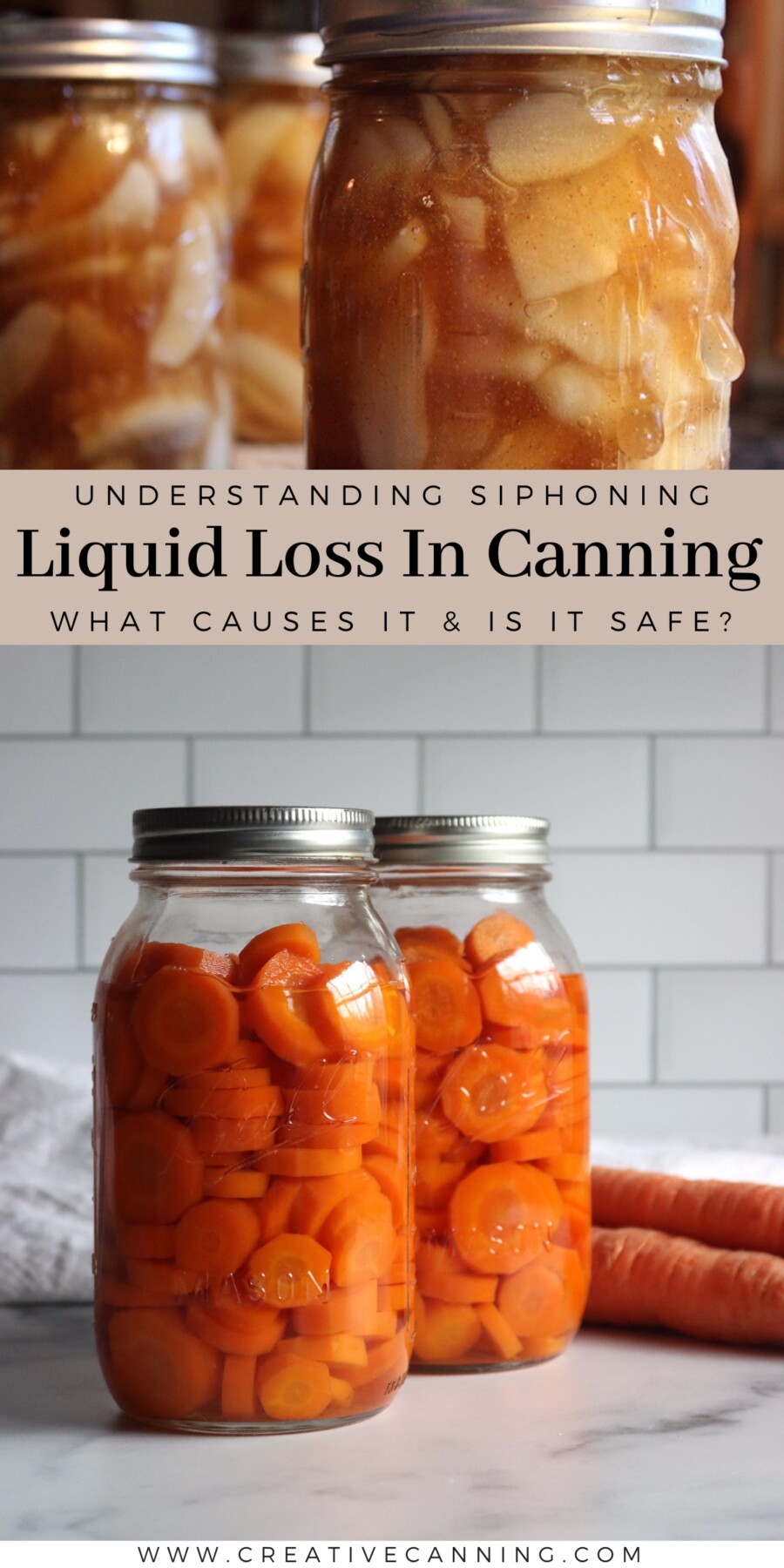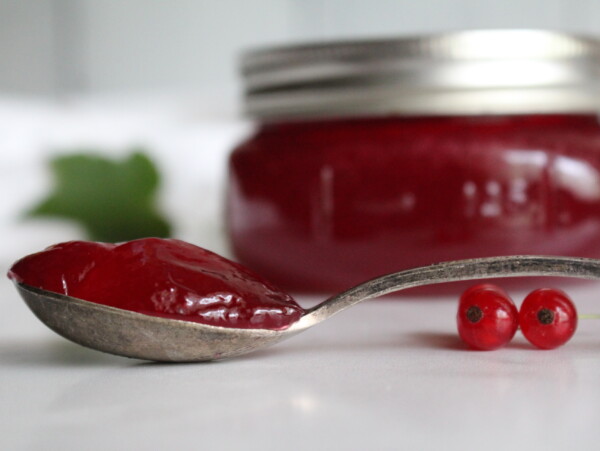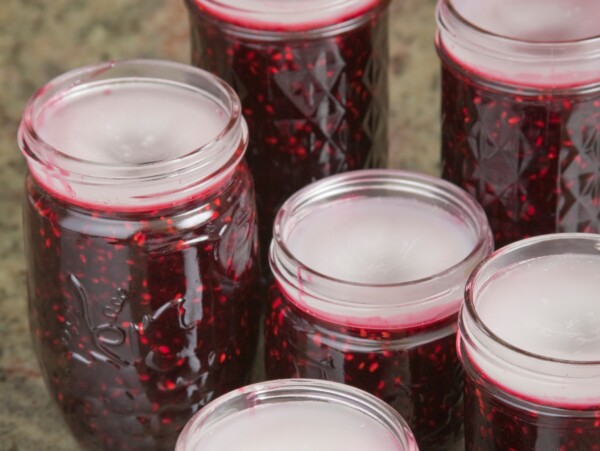This post may contain affiliate links. Please see our disclosure policy.
Liquid loss from jars during canning (known as siphoning) is one of the most common frustrations for home canners, leaving food looking dry or uneven in the jar. The good news is that it’s almost always preventable with a few small adjustments to your cooling and pressure control techniques.
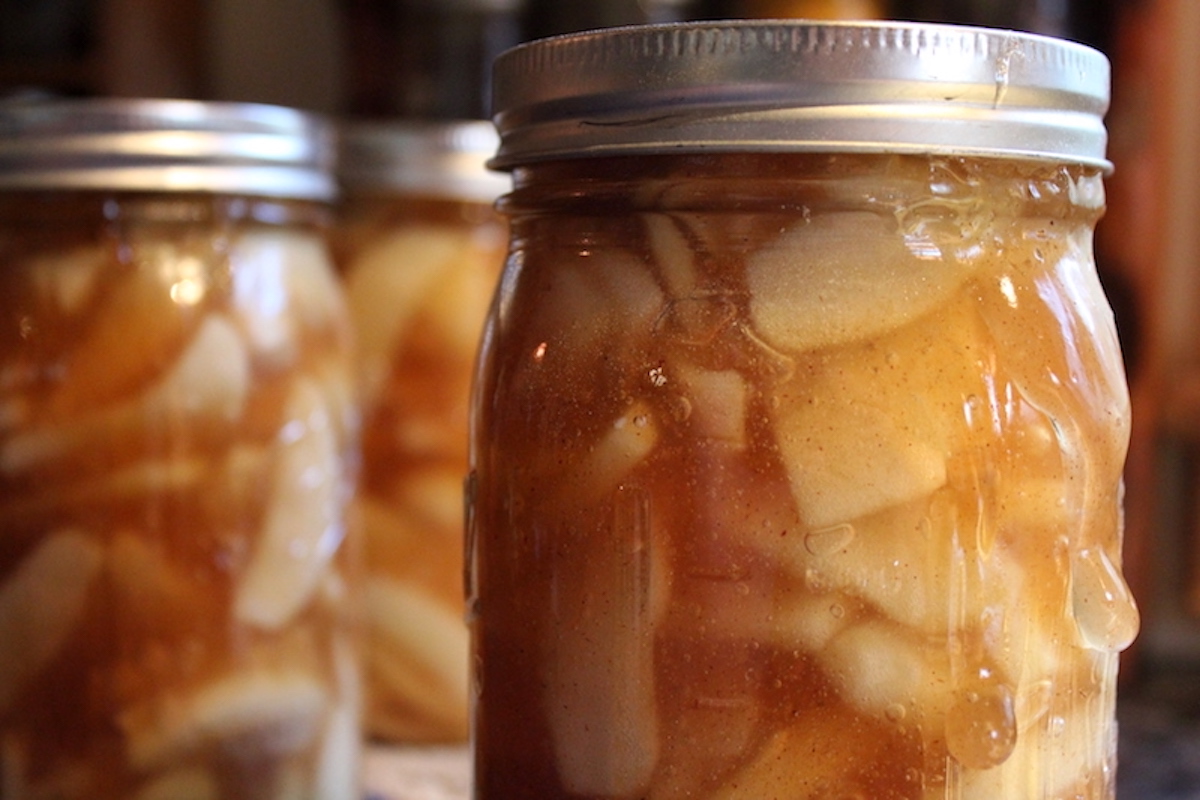
If you’ve ever opened your canner and found jars with less liquid than when they went in, you’ve experienced siphoning—the loss of liquid during or after processing. It’s one of the most common (and frustrating) canning issues, especially for new canners.
A little liquid loss won’t make your food unsafe, but it can affect quality, shelf life, and appearance. Understanding why siphoning happens—and how to prevent it—can help ensure better results with every batch.
In general, siphoning impacts quality rather than canning safety, but it’s still a nuisance. It’s a normal part of canning, and it happens even to experienced canners. Your goal is to minimize it, knowing that it is inevitable if you’re canning on a regular basis.
I will go through all the potential causes of liquid loss in canning, but in most cases, these are the most common causes/solutions:
For Waterbath Canning: Most siphoning can be prevented by simply leaving the jars in the canning water for 5 to 10 minutes after the processing time is complete and you’ve turned off the heat. This allows them to cool slightly (and slowly) before they’re removed into the much cooler air. That alone will prevent about 90% of siphoning in jams, jellies, pickles, and pie fillings.
For Pressure Canning: Most siphoning happens because of pressure fluctuations or cooling the canner too quickly. To prevent it, always let the pressure drop to zero naturally, and don’t try to speed it up with cold water, fans, or lifting the weight early. Once the gauge reads zero, wait another 5–10 minutes before removing the weight or opening the lid. When you do open the canner, tilt the lid slightly away from you and let the jars rest inside the open canner for another 5 minutes before taking them out.
That gradual cooling period allows the pressure inside the jars to equalize with the canner, preventing liquid from boiling out. Even a small rush of steam when you open the pressure canning vent can indicate the canner isn’t quite ready, so patience here really pays off.
By taking your time during depressurization and cooling, you’ll stop nearly all siphoning issues.

What Is Siphoning?
Siphoning refers to liquid being forced out of the jar during canning. It’s most noticeable with pressure canning, but it can also occur in water bath canning, especially with fruits or pickles packed tightly in liquid. (And in my experience, it’s most common in dense waterbath canned goods like pie filling canning recipes or broth-y pressure canned goods like soup canning recipes.)
When the jars heat up, the contents expand and push air out of the headspace. If the temperature inside the jar changes too suddenly—either during heating or cooling—steam and liquid can escape past the lid before it seals. This escaping liquid is what’s known as siphoning.
Is It Dangerous When Liquid Escapes Canning Jars?
The good news: siphoning doesn’t automatically make a jar unsafe. As long as the jar sealed properly and the food was processed for the full tested time, it’s still safe to store and use.
However, significant liquid loss can cause:
- Food above the liquid line to darken or dry out over time.
- Shorter shelf life, since exposed food deteriorates faster.
- Starch thickening or sediment at the bottom of the jar (especially in soups or beans).
Assuming the jar sealed properly, it is still safe to use after canning. The main thing here is quality may degrade faster and it’s best to use it up first before you use any un-siphoned jars from the same batch. But again, it’s a quality thing, not a safety issue.
If a jar didn’t seal after siphoning, refrigerate it and use it within a few days. Safety issues come from unsealed jars, whether they Siphoned or not. But, seal failures are a bit more common when jars Siphon because liquid from inside the jar can interfere with the seal.
Just be sure you check the seals on sciphoned jars extra carefully.
The Science Behind Siphoning
Liquid loss is primarily caused by rapid temperature or pressure changes. When the pressure inside the jar changes faster than the surrounding environment, the contents are literally pulled out through the lid vent before it seals.
There are three main moments where this can happen:
- When jars are heated too quickly in the canner – Rapid heating expands the contents faster than the air can vent, pushing liquid out.
- When pressure fluctuates during canning – Each spike or drop in canner pressure forces liquid in and out of the jars.
- When jars cool too quickly after processing – A sudden change in pressure or temperature outside the jar causes liquid to continue escaping until the lid seals.
Jars that contain starchy foods like beans can also sometimes look like they’ve sciphoned or lost liquid, but in reality, the beans themselves just absorbed the liquid. The results are the same, and any food above the liquid line is liable to degrade in quality faster than jars that have the food submerged in liquid.
Again, it’s a quality issue, not a safety issue. Just be sure to use those first.
And, of course, remove the canning rings and wash off the jars thoroughly before storage. The outside of the jars may be sticky or covered in food, and you’ll need to remove that to keep your pantry clean.
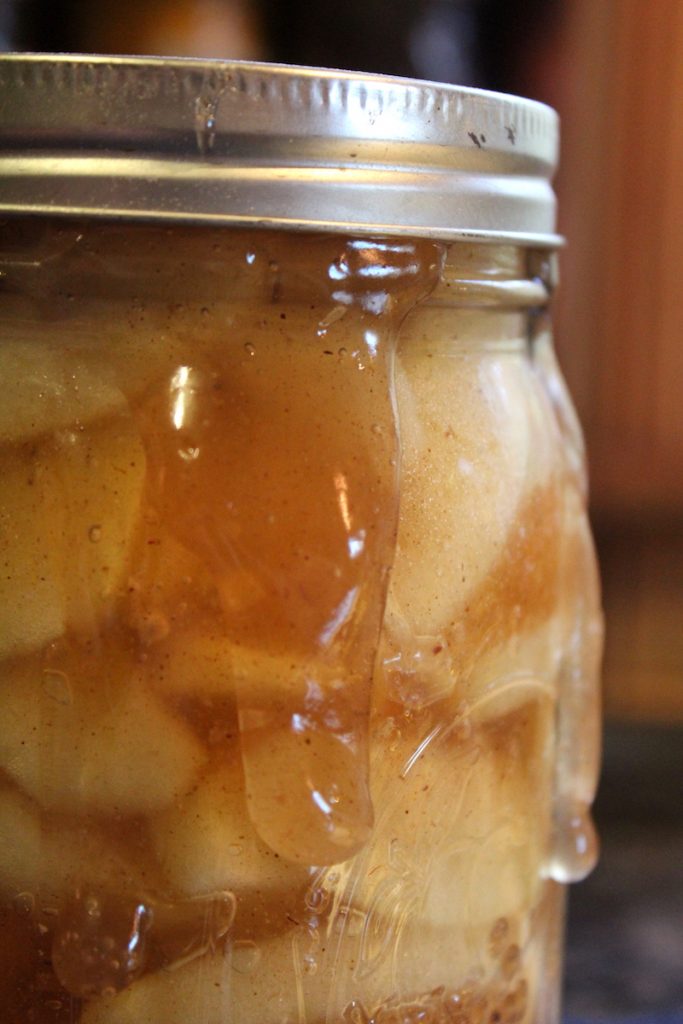
Common Causes of Liquid Loss (and How to Prevent Them)
There are a number of reasons for siphoning in canning, but there are good ways to prevent each cause.
Fluctuating Pressure or Temperature
Pressure fluctuations are the number-one cause of siphoning. If your canner pressure dips even slightly during processing, it takes longer for the temperature to recover. Those fluctuations cause contents to boil aggressively inside the jars, forcing liquid out.
How to Prevent It:
- Maintain steady heat during processing.
- Adjust your burner gradually when correcting pressure.
- Avoid walking away or multitasking while pressure canning—small fluctuations matter.
Overfilled or Underfilled Headspace
Proper headspace (the space between the food and the lid) allows for expansion during processing. Too little headspace means there’s no room for that expansion, so liquid gets pushed out. Too much headspace, on the other hand, can trap air bubbles that interfere with sealing.
How to Prevent It:
- Follow the recipe’s headspace instructions exactly. Each recipe will have it’s own specific guidance, but in general the recipe will likely specify:
- ¼ inch for jams and juices
- ½ inch for fruits and pickles
- 1 inch for most vegetables
- 1 to 1¼ inches for meats, soups and pie fillings
- Remove air bubbles before sealing by running a plastic spatula along the jar’s inside.
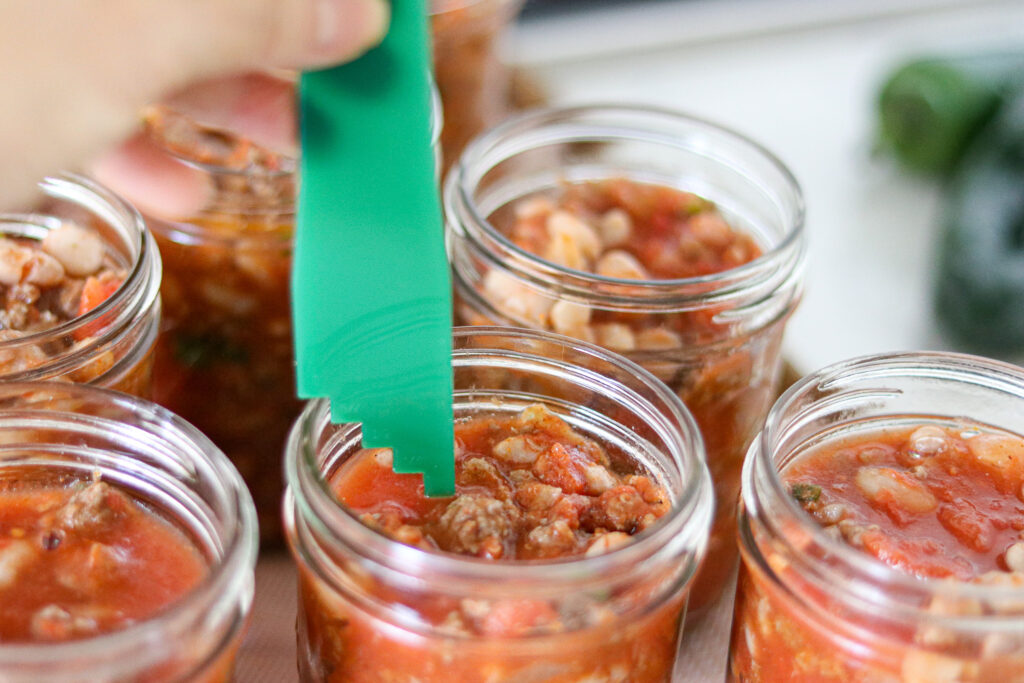
Rapid Heating or Cooling
Putting cold jars into a hot canner, or removing jars too soon, creates dramatic pressure changes. The sudden temperature difference between jar contents and canner water causes expansion and contraction, which pushes liquid out.
How to Prevent It:
- Warm jars before filling if your food or canner water is hot.
- Let jars rest in the canner 5–10 minutes after processing, with the heat turned off and lid cracked, before removing them.
- Avoid setting hot jars on cold surfaces; place them on a towel or wooden board to cool slowly.
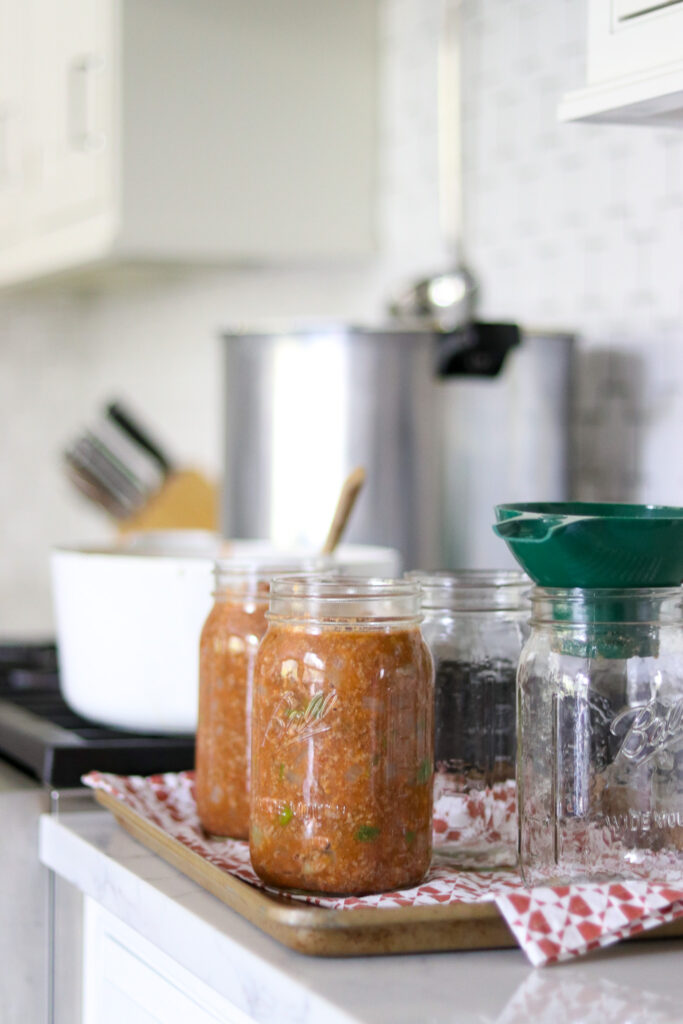
Uneven Jar Cooling After Processing
Once you remove jars from the canner, they continue to cool and seal. If they’re exposed to a draft or chilled air too quickly, the inside pressure drops suddenly, leading to more liquid loss.
How to Prevent It:
- Allow jars to cool undisturbed for 12–24 hours.
- Keep them out of drafts, air conditioning, or direct sun.
- Never tighten rings immediately after processing; let the vacuum seal form naturally.
Incorrect Packing Density
Overpacking jars—especially with solid foods like beans, corn, or meat—can leave too little liquid between food pieces. As steam expands, that lack of cushioning forces liquid out.
How to Prevent It:
- Don’t cram jars full; follow recipe instructions on raw- or hot-pack techniques.
- When pressure canning dense foods, always add the required liquid to ensure proper heat penetration and reduce boiling inside jars.
Sudden Pressure Release
When pressure canning, it’s tempting to speed up the process once time is up—but rapid depressurization is a sure way to cause siphoning. As the pressure in the canner drops too quickly, the contents of the jars erupt and spill.
How to Prevent It:
- Always allow pressure to return to zero naturally.
- Wait 10 minutes after the gauge hits zero before opening the lid.
- Tilt the lid slightly to release steam gradually, not all at once.
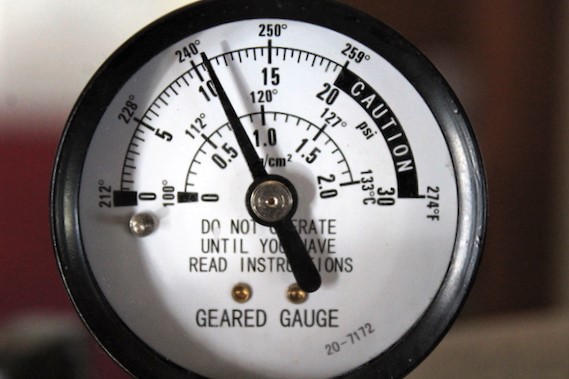
Altitude Misadjustment
At higher altitudes, lower atmospheric pressure changes boiling points and increases the risk of siphoning if times or pressures aren’t properly adjusted.
How to Prevent It:
- Always adjust your processing time or pressure for your elevation.
- Increase processing time for water bath canning.
- Increase pressure for pressure canning.
How Much Liquid Loss Is Too Much?
A small amount—up to an inch—is completely normal and doesn’t affect safety if the jar sealed properly. If the food is still covered by liquid, you can leave it on your shelf.
The National Center for Food Preservation cautions that “excessive” liquid loss may pose a safety problem. They’re kind of vague on this topic, and “excessive” can be open to interpretation.
The main worry is that the jars might have lost so much liquid so quickly that there wasn’t enough moisture withing the jars to properly circulate heat and process the food. (Water transfers heat more efficiently than air, so it’s better at sterilizing the jar’s contents.)
The general guidance is “excessive” is when the jars lose more than half of their liquid, meaning the water line is at or below the half way point up the side of the jar. They suggest refrigerating jars when this excessive water loss happens.
Personally, I’ve never had a jar lose that much liquid in 20+ years or canning and thousands of jars preserved. I’ve seen very few examples of that online as well. It’s very rare for a jar to lose that much liquid.
Most often, they lose a bit at the top, exposing some solids, but it’s not an issue and the jars can just be used up first in your pantry. But, be aware, if somehow you do lose most the liquid in a jar, that’s when the NCHFP suggests refrigerator storage.
(And, of course, if the jars didn’t properly seal, but that goes without saying, as unsealed jars are never safe for pantry storage.)
Can You Refill Liquid After Siphoning?
No. Once a jar has sealed, don’t try to open it and add liquid—it’ll break the vacuum and compromise safety.
If the loss is minor and the food is below the rim, it’s fine as is. If the loss is extreme and you’re worried about drying or discoloration, refrigerate and use soon rather than reprocessing.
Does Siphoning Mean You Processed Incorrectly?
Not necessarily. Even experienced canners occasionally see liquid loss. Pressure canning naturally causes some bubbling and expansion, especially with long processes. The goal is to minimize it, not eliminate it entirely.
If it happens regularly, though, revisit your steps—especially your cooling practices. The most common culprit for repeat siphoning is removing jars too soon after the canner is turned off.
How to Prevent Siphoning in Future Canning Batches
Here’s a quick checklist to help you prevent liquid loss next time you can:
- Warm jars and food to similar temperatures before loading.
- Use correct headspace and remove air bubbles.
Bring pressure up slowly and avoid sharp fluctuations. - Hold steady pressure during the processing time.
- Let pressure return to zero naturally, then wait at least 10 minutes before opening the lid.
- Rest jars inside the canner for 5–10 minutes before removing.
- Cool jars slowly in a draft-free area.
These small steps make a big difference in maintaining jar quality and liquid level.
A little liquid loss in canning isn’t the end of the world—it’s a normal side effect of heating and cooling jars. What matters is whether your jars sealed and the food remains safely preserved.
Siphoning is almost always preventable with a few simple adjustments: maintain steady pressure, respect cooling times, and avoid rushing the process. The best canning results come from patience—slow heating, slow cooling, and steady pressure from start to finish.
If you ever find a jar that lost liquid but sealed properly, don’t worry. Label it, store it with the rest, and make a note for next time. Each batch is a chance to refine your technique—and before long, you’ll find that your jars come out nearly perfect, liquid and all.
Canning Jar Liquid Loss FAQ
Siphoning is the loss of liquid from jars during or after canning, caused by rapid changes in temperature or pressure that force liquid out before the seal forms.
Not usually. If the jar sealed properly and you processed it for the full time, it’s still safe to store and eat, even if the liquid level dropped. If you experience excessive liquid loss, as in losing more than half of the liquid in a jar, those jars should be stored in the refrigerator and treated like unsealed jars. Otherwise, jars with moderate amounts of liquid loss are fine for pantry storage so long as they’re sealed.
A small amount—up to an inch—is common. Large losses or exposed food can affect quality and shelf life but don’t necessarily mean spoilage.
Maintain steady pressure, avoid rapid heating or cooling, follow headspace directions, and let jars rest in the canner for several minutes before removing them.
No. Never open sealed jars to add liquid, as this breaks the vacuum and compromises safety.
